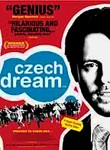 I found this great list of 18 cult documentaries you must see, which is how I discovered this deceptively simple Czech film.
I found this great list of 18 cult documentaries you must see, which is how I discovered this deceptively simple Czech film.
Synopsis: Two Czech film students convince an ad agency to help them pull a huge hoax: opening a fake “hypermarket.” Not only do they successfully fool the public into believing that a huge new “hypermarket” is about to open, causing hundreds of people to wait in line on the “opening” day – they also managed to fool me into expecting more of a dramatic climax than actually happened (by faking footage used in the trailer). As a viewer, you end up feeling a little bit betrayed, like the people who attended the grand opening must have felt. And aren’t films supposed to be about making you feel things? It’s infuriatingly brilliant on more than one level.
Story and Structure: Straightforward chronology. I’m envious of filmmakers who choose to make films with this obvious of a structure – it makes their job so simple. It’s a film about an event – and the obvious thing to do is begin with the idea, and how the idea is developed, building up to the event itself – the climax – and tie up a couple loose ends before rolling credits. Done.
One thing worth noting: They did NOT opt to begin the film at the obvious place: the end. I might have opened with the crowd rushing toward the fake building and then flash back to how the plan was hatched.
Cinematography: There are more glidecam shots in this film than any doc I’ve ever seen. The camera is fairly flying – in and out of crowds, circling around people multiple times, enough to make you dizzy in the hands of a less skilled operator, but this guy was ON IT. The technique called attention to itself, but that was part of the story – the idea that slick production values can sell anything. The quality of the cinematography certainly rose above that of what I’d expect from a couple of film school students. You see the one kid filmming everything with a handheld camcorder, but I didn’t see any footage in the film that looked like it had been filmed on a crappy handheld camera, so that apparently was just a prop.
Editing: The story manages to move along, despite taking a long time with arguments among members of the team who developed the marketing campaign, lots of time spent with focus group participants, etc. It appeared there must have been a ton of footage, because we get many many camera angles during the event day. They must have had a dozen camera people operating to get the coverage they got.
Sound and Music: The most memorable music was the crowd singing prior to the opening of the fake store – that was precious. Otherwise, audio was good – lots of boom poles visible in the film as they filmmakers made no effort to hide the fact that this was a film being made.
